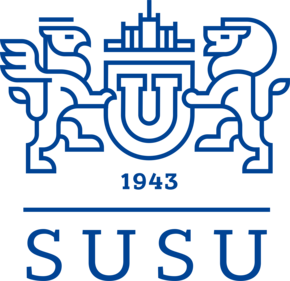On October 17th, the 18th All-Russian Science-to-Practice Conference "Innovations in Construction. KNAUF Technologies" wrapped up at the Sigma Academic Complex of South Ural State University.
For nearly two decades now, the conference has been the result of collaboration between the SUSU Faculty of Architecture and Civil Engineering and the KNAUF group of companies.
"This conference, of course, focused on student work," commented SUSU Rector Alexander Wagner. "Our students' papers demonstrate their understanding of how the industry is developing, current trends in construction and design, and which technologies and materials are becoming more promising. Students engage in such research both as part of their academic activities and outside of them, and their motivation can only be encouraged."
Like they had been doing it for many years in a row, representatives from the KNAUF GIPS management attended this conference, too, ready to answer any questions from the future builders. An exhibition of Knauf building material samples and process flow charts was displayed in the foyer.
"Initially the conference began as a review of KNAUF materials, but it has long since outgrown that format. Today, it is dedicated to innovation in construction in general," said Oksana Bondareva, Head of the KNAUF GIPS Training Centre. "This format of collaboration allows our company to cultivate a generation of professionals focused on the application of the most advanced technologies. SUSU was one of the first to host these conferences. We have been collaborating since 2004."
The conference was attended by young researchers: Bachelor’s degree students, Master's degree students, and postgraduates not only from SUSU, but also from Sibstrin (Novosibirsk State University of Architecture and Civil Engineering), Irkutsk National Research Technological University (INRTU), and other universities across our country.
The students' research studies not only focused on cutting-edge technologies but also addressed the most pressing issues that the modern construction-and-housing and utilities sectors are facing. These included recognizing potholes and curb defects using neural networks, creating heat-resistant concrete based on vermiculite, multilayer cellular materials made from foamed clay and foamed corundum, and, conversely, developing frost-resistant materials capable of maintaining both stability and thermal insulation under the cyclical freeze-thaw conditions typical of the Arctic climate.
A lot of work has been done using electron microscopes and computer modelling programs.
Many of the presentations sparked lively discussions, with even first-year students asking questions. Environmental conservation issues were also discussed, such as the use of metallurgical slag in construction mixtures.
The best presentations by the students of the SUSU Institute of Architecture and Construction were awarded prizes: Timofey Mishnev took the first place, Dariia Izosimova took the second place, and Valentin Abyzov took the third place. Evgeny Alistratov won in the KNAUF category.




